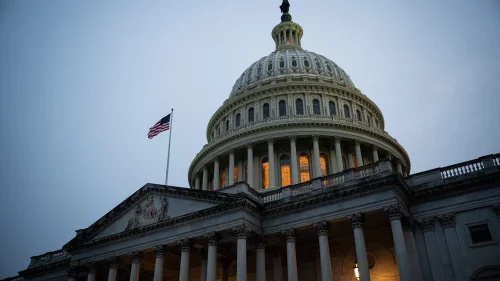Government Shutdown Hits the U.S.: What You Need to Know About the Latest Funding Crisis

The United States federal government has officially shut down after Congress failed to agree on critical funding measures. This shutdown follows a series of contentious votes in the Senate, where Republicans and Democrats clashed over funding bills designed to keep the government operational. But what exactly does this mean for Americans, and which services will be affected?
The dispute revolves around two competing funding proposals. Democrats advocated for a bill that would extend government funding through the end of October and continue federal healthcare subsidies under the Affordable Care Act (ACA). Republicans, however, blocked this bill and pushed a short-term funding measure to maintain government operations only until November 21, which Democrats refused to support.
With federal agencies now instructed to execute “orderly shutdown” plans, millions of Americans could feel the impact in various ways—from delayed government services to furloughed federal employees. But some programs, including Social Security and VA benefits, will continue. This article explores the causes, impacts, and potential duration of the shutdown, along with what Americans can expect in the coming weeks.
Why the Government Shut Down
Senate Deadlock Over Funding Bills
The shutdown resulted from the Senate’s inability to pass two key funding bills. The first Democratic bill aimed to fund the government through October and extend ACA subsidies. The second Republican-backed measure was a short-term resolution keeping the government funded at current levels until November 21. Both proposals required 60 votes to pass but fell short due to partisan disagreements.
Political Stalemate
Democrats insisted that any spending measure must include an extension of healthcare subsidies, while Republicans refused to include such provisions. This impasse prevented either party from reaching a consensus, ultimately triggering the shutdown.
Immediate Impacts on Federal Services
Furloughed Employees and Unpaid Staff
Approximately 750,000 federal employees are estimated to be furloughed daily, according to the Congressional Budget Office. Nonessential federal workers will face unpaid leave, while essential staff such as air traffic controllers and TSA employees may continue working without pay. Past shutdowns have shown that even essential workers sometimes call in sick when asked to work unpaid.
Disrupted Services
Some government services will continue, including Social Security, VA benefits, and Medicare and Medicaid payments. However, beneficiaries may experience delays. Programs like the Women, Infants, and Children (WIC) nutrition assistance program could soon run out of funding, and the operational status of National Parks remains uncertain.
Potential Long-Term Effects
Federal Workforce and Operations
President Donald Trump suggested that the shutdown could lead to “irreversible” changes, including mass firings of federal employees and elimination of certain programs. While these measures are not confirmed, they illustrate the potential severity of an extended shutdown.
Economic and Social Impacts
Hundreds of thousands of federal workers and active-duty service members may miss paychecks starting mid-October. Service delays, reduced government support, and uncertainty surrounding federal programs could have broader social and economic consequences if the shutdown continues for an extended period.
Political Fallout
Democrats’ Position
Democrats argue they are fighting to protect Americans’ healthcare by pushing for an extension of ACA subsidies and opposing cuts to healthcare programs enacted in recent GOP legislation. Senate Minority Leader Chuck Schumer criticized Republicans for “plunging America into a shutdown,” emphasizing the potential risk to health coverage.
Republicans’ Position
Republicans contend that Democrats are using the federal budget to advance partisan goals. Senate Majority Leader John Thune accused Democrats of sacrificing the American people to further their political interests.
Efforts to Resolve the Shutdown
Continuing Negotiations
Republican leaders have signaled they will continue votes on their stopgap funding measure, hoping some Democrats will join them as the shutdown progresses. So far, a few Democrats and an independent senator have supported the Republican proposal, but overall, bipartisan agreement remains elusive.
Lessons from Past Shutdowns
The last government shutdown from December 2018 to January 2019 lasted 35 days, making it the longest in U.S. history. Observers caution that without compromise, the current shutdown could also drag on, with escalating consequences for federal workers and the public.
FAQ: Common Questions About the Government Shutdown
1. Which federal services remain operational?
Essential services such as Social Security, VA benefits, Medicare, and Medicaid payments continue, though delays may occur.
2. Who is affected by unpaid furloughs?
Approximately 750,000 federal employees labeled as nonessential may be furloughed without pay.
3. How long will the shutdown last?
There is no clear timeline, as it depends on Congressional negotiations. Past shutdowns have lasted from a few days to over a month.
4. Will National Parks stay open?
The status of National Parks is uncertain. In prior shutdowns, parks sometimes remained open but were unstaffed.
5. What can Americans do during a shutdown?
Stay informed about affected programs, plan for potential service delays, and monitor government updates for reopening announcements.
Conclusion
The U.S. government shutdown marks a critical moment of political deadlock, impacting hundreds of thousands of federal employees and numerous public services. While some essential programs continue, many Americans will experience delays in services and uncertainty about federal operations. As Republicans and Democrats remain divided, the path to reopening the government remains unclear. Staying informed and prepared is key while lawmakers negotiate a resolution.




